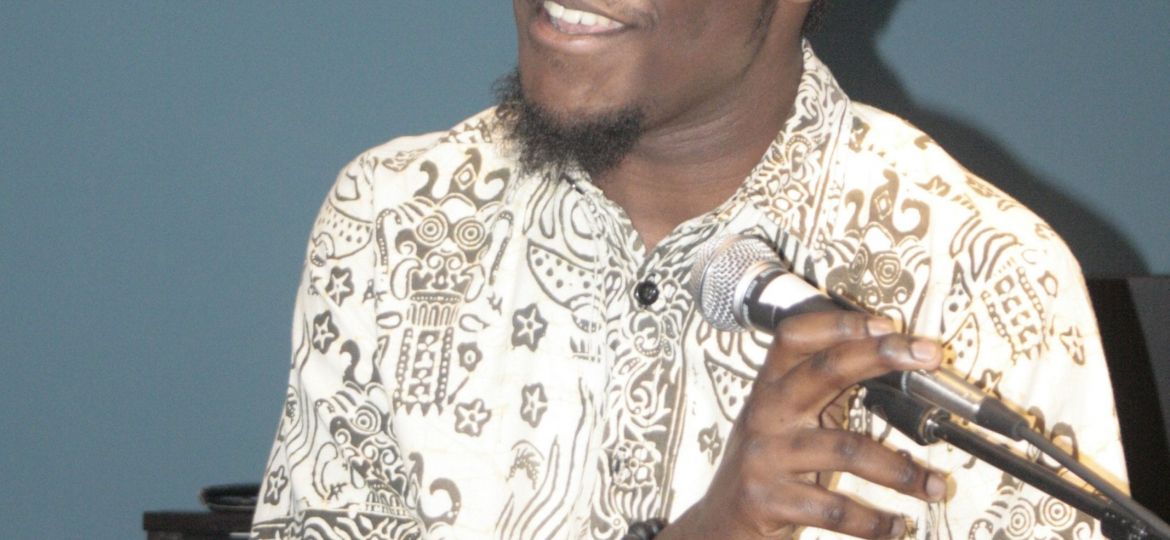
This year’s celebration of Africa Week took place from Nov. 10 through Nov. 16, and focused on the theme “Inside Africa.” On Tuesday, Nov. 11, the festivities included African Storytelling. Students gathered in the Lair to enjoy hot chocolate, cookies and a night filled with folktales.
In previous years, Professor of English Joseph Mbele has narrated these stories, but this year the students rose to the occasion, and five students took turns sharing stories from their childhood.
The first storyteller of the night was Tazo Mnangagwa ’16. He told a story about a vain hare who was put in his place by a tortoise in a race. The tortoise was able to win because he placed other tortoises who resembled him at every milestone to ensure his success. Although the tortoise cheated to accomplish his goal, the moral of the story, according to Mnangagwa, was centered on the hare. Mnangagwa then shared another story about a mean lion and the hare who changed the lion’s ways.
Next up was Nii Akita ’16 who shared some stories from Ghana. His first story was about a spider who wanted to be the best at everything, and how he became the “king of fables.” The spider was given a mission thought to be impossible: acquire the book of everything, from knowledge to lies to stories from God. He was sent to fetch a python, a leopard, a powerful queen bee and a devilish fairy. With the help of his cunning wife, the spider succeeded and won the book that made him very powerful. Akita concluded by sharing the moral of the story: you may be small and disregarded, but once you learn to use your brain, you can overcome anything.
The night continued with various stories which were told in animated voices to a lively audience. The end of every tale was met with applause. Most of the tales were about animals given human abilities and qualities. The hare and tortoise examples of two celebrities in the animal kingdom with wide-ranging acting skills are very popular in African storytelling.
Chandreyi Guharay ’16, the third storyteller, gave a brief summary of how the presence of Africans in Nicaragua came to be. Her story was one of the few that contained human characters. She told the story of a powerful African chief who lived in the northern part of Nicaragua.
“He was like the Jesus Christ of his community, for he did wonders like multiplying foods and vegetables,” said Guharay as she painted his image on an ethereal canvas.
She further explained the relationship the community had maintained with nature, which led to conflicts with the arrival of the British and the disappearance of the community. The descendants of the chief reappeared ten years ago, claiming they were back to protect the people and nature.
Then Themba Jonga ’18 told two stories. One from was from South Africa and the other was from Lesotho. Before he began each story, he enlisted the help of the audience in practicing a storytelling tradition. He said a phrase, and the audience responded with the appropriate responding phrase.
Jonga’s stories were short yet enticing. One of his stories was titled “Why Monkeys Live in Trees.” This story was about a wild cat whose tail was tied to a tree by a monkey, and to teach the monkey a lesson, the wildcat later played dead and then chased the monkey at his funeral. The monkey jumped in a tree in attempt to escape, and until this day the monkey lives in trees and does not come down to the ground because he is afraid of the wildcat.
Daniel Odetola ’16 was the last storyteller of the night. One of his stories was a 30-second story which he described as an example of an African dilemma tale. The story goes like this: a man permitted a snake to enter his mouth and take refuge in his belly, and the snake refused to come out. A heron pulled the snake out his throat, and the man imprisoned the heron, his wife released the heron, and was killed. Which of the three was most ungrateful?
Although the audience was not seated under the moonlight by a fireside to experience African storytelling at its fullest, the Lair booming with laughter and applause suggested that it was a fun night, and for an hour the audience was truly inside Africa.
akindele@stolaf.edu
Photo Credit: MADISON VANG/MANITOU MESSENGER

